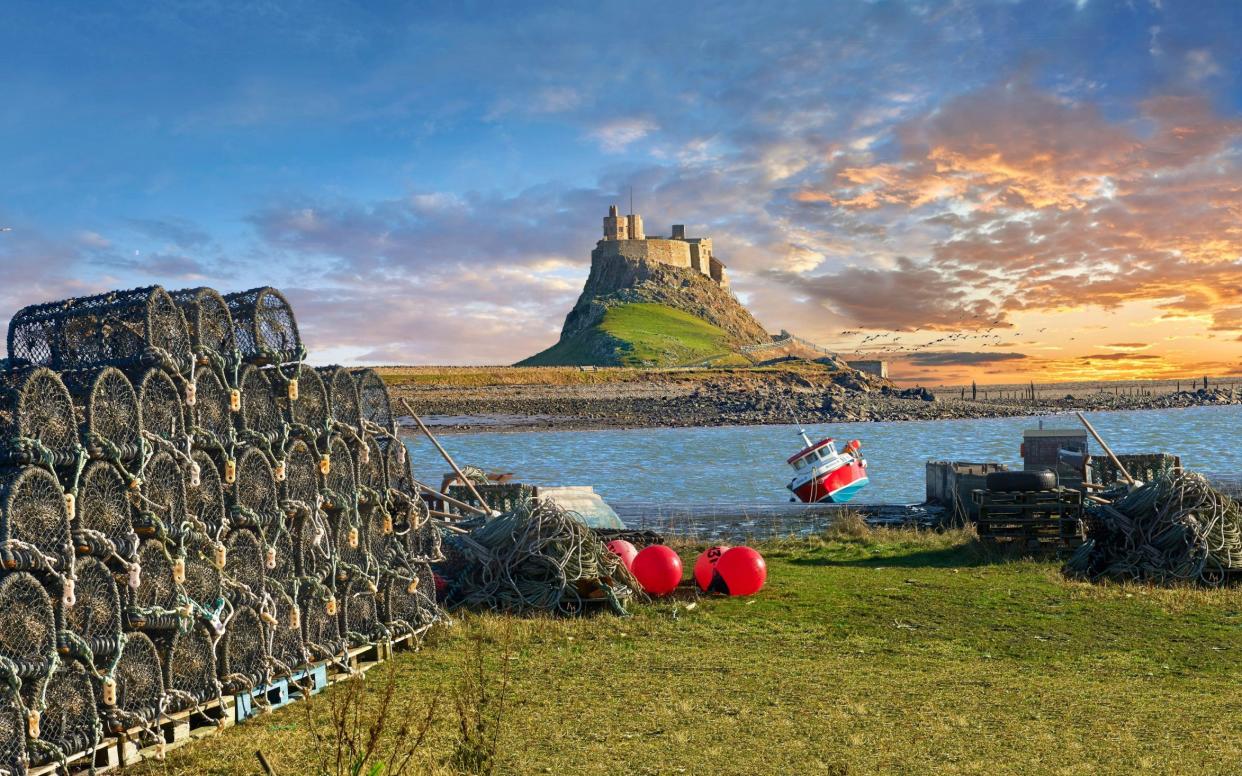Whitehall fishing ban would ‘rip heart’ out of Holy Island, residents warn

For centuries, fishermen have been the lifeblood of the tiny Holy Island of Lindisfarne off the coast of Northumberland.
But red tape from Westminster now threatens to kill off the profession – and potentially the entire community – as officials propose banning fishing as part of a drive to rewild the sea.
The Department of Food, Environment and Rural Affairs (Defra) is consulting on designating the seas to the north of the island, a highly protected marine area (HPMA), which would outlaw the crab and lobster potters who set sail from the island in the early hours.
If the fishermen are put out of work and forced to move to the mainland with their families, the running of the island’s restaurants, hotels, schools and even the emergency services could be put in jeopardy, residents have warned.
The island, one of the most important centres of early English Christianity, with a history dating back to the 6th century, would have its heart “ripped out”, locals say.
Holy Island, as residents call it, has a population of around 150 and is linked to north Northumberland by a causeway that is only accessible for around 14 hours a day.
There is no ferry and, with crossing times dictated by the changing tide, it is not possible to live on the island and work a job with regular hours on the mainland.
Fishing is the best-paid job on the island, and fishermen make up around 10 per cent of the population. If they were forced to move for work, they would take their families with them.
At least three of these families include fully trained first responders who make up 50 per cent of the coastguard team, and it is said the 999 response could not function without them.
There are already layers of conservation law in the waters surrounding Holy Island, and those who carry out sustainable crab and lobster potting have not caught fish commercially for years.
John Bevan, the clerk of Holy Island Parish Council, and the Rev Canon Dr Sarah Hills, the vicar of St Mary’s Holy Island, warn Defra’s proposal is “both misguided and inequitable”.
They say it goes against the department’s criteria of minimising “social and economic impacts whilst maximising ecological gain”.
Speaking on behalf of the fishermen, they say it “shouldn’t be positioned as ‘fishing against environment’”, because they are “allies not enemies in protecting the oceans” upon which they and their families depend.
Mr Bevan said there is “shock and dismay” that the consultation, about which they found out through a newspaper article last month, will only give them until September to gather evidence and make their case against the ban.

The area north of the island is one of five across the UK that have been proposed to the Government to become HPMAs, designated to allow the protection and recovery of marine ecosystems.
But the skippers believe their sustainable methods of crab and lobster potting have already paid off, and the area is thriving, as demonstrated by a record number of seals.
One said they have already “gone through various bylaws over the years”, including pot limitations, a ban on catching animals with eggs and tagging systems, and “we’ve benefitted 100 per cent through better catches, fishing has never been better, we’re already reaping the benefits of conservation”.
Academic research has also backed the low impact of potting fisheries on marine habitat and studies have found it is “compatible” with conservation, residents point out.
It is argued that the “questionable ecological benefit” of the ban would have a “disproportionately large” economic and social impact.
One long-term resident islander said: “This will rip the heart out of the island community and leave it seriously depleted, and for what gain?”
The decision would also damage tourism, the second-biggest industry on the island, where the 16th-century Lindisfarne Castle is run by the National Trust.

The owner of a local restaurant told The Telegraph: “My staff on the island are families of the fishermen. If the fishery closes, my business will suffer because I cannot get the staff from the mainland due to the tides. Also, eating fresh Holy Island crab is a major part of the tourist experience here.”
Defra’s proposed fishing ban covers 50 square miles and includes the area to the north of Holy Island, to which the island’s six boats travel in the early hours.
Locals believe the department has misunderstood activity in the area and point out that the consultation document refers to practices such as netting posts, which have not been used for decades.
A spokesman for Her Majesty’s Coastguard said that “for the last 200 years”, it has run a response service made up of volunteers from the island who are “employed in the mainstay island economies such as fishing, farming and tourism”.
A Defra spokesman said: “This consultation will inform decisions on future highly marine protected areas and their final boundaries.
“The public and stakeholders will have the opportunity to share their views and provide additional evidence of the potential impact of proposed pilot sites.
“Highly protected marine areas will protect the marine environment and help a wide range of valuable habitats and species to fully recover while ensuring we can continue to meet the sustainable needs of those who rely on our seas.”

 Yahoo Movies
Yahoo Movies 
